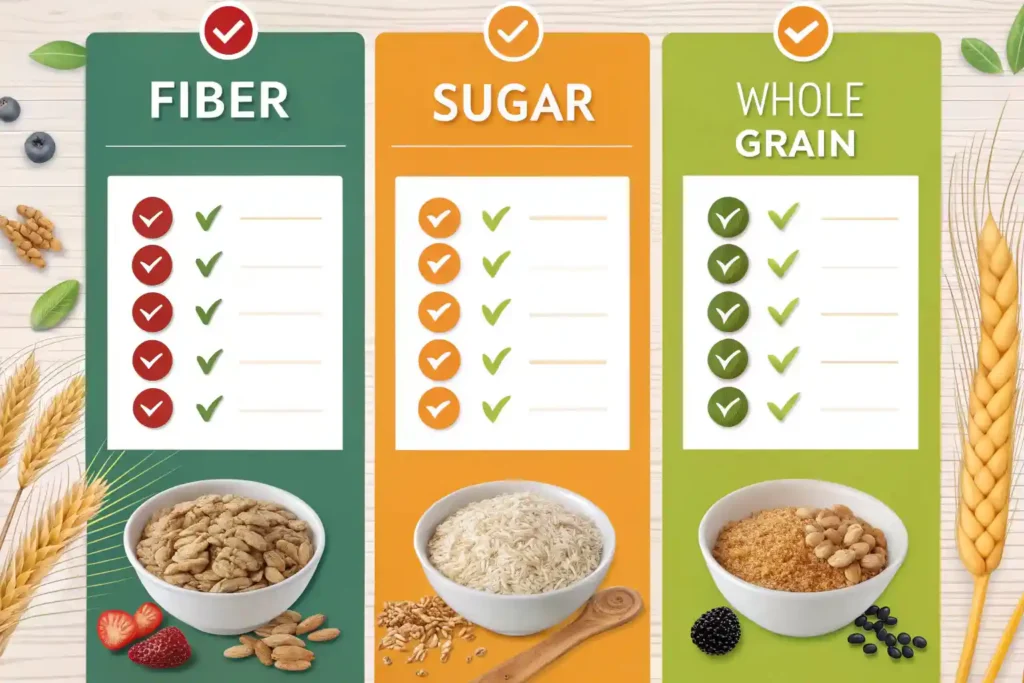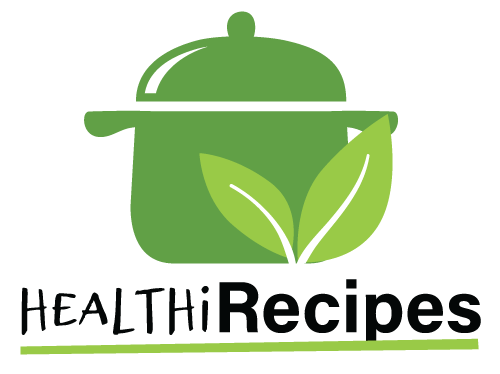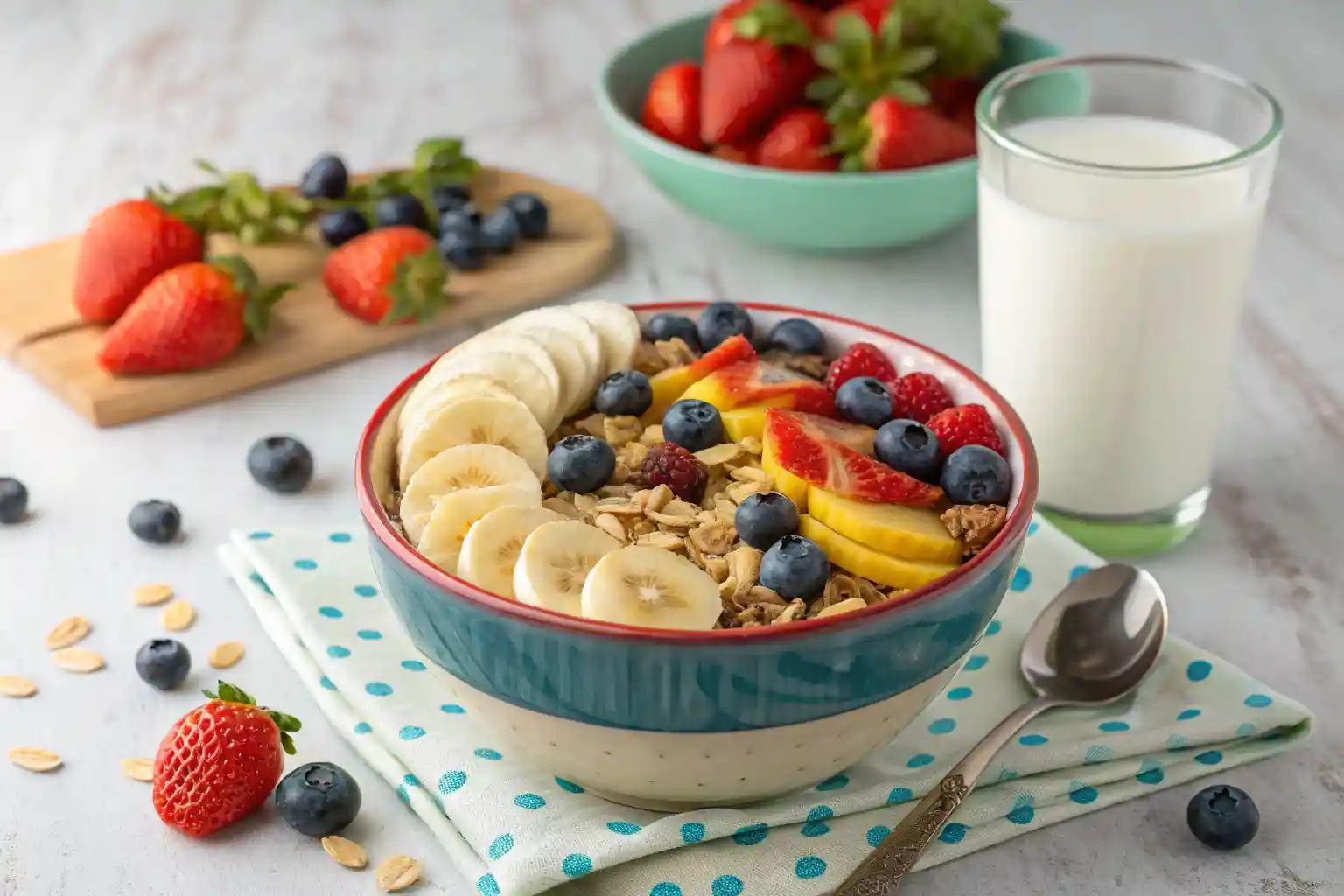Table of contents
Breakfast is often called the most important meal of the day, especially for children. A nutritious breakfast sets the tone for a productive day, providing the energy and focus kids need for school and play. Among the various breakfast options, healthy cereals stand out as a convenient and appealing choice. In this article, we will explore the best options for healthy cereal for kids, ensuring that parents can make informed decisions about what their children eat.
1. Which Kid Cereal is the Healthiest?
When it comes to selecting the healthiest cereal for kids, several factors come into play. Parents should look for cereals that are not only tasty but also packed with essential nutrients. Here are some key considerations:
Nutritional Criteria for Healthy Cereals
- Fiber Content: Aim for cereals that contain at least 3 grams of fiber per serving. Fiber is crucial for digestive health and helps keep kids feeling full longer.
- Sugar Levels: Choose cereals with low sugar content. Ideally, cereals should have less than 10 grams of sugar per serving. High sugar levels can lead to energy crashes and unhealthy eating habits.
- Whole Grains: Look for cereals that list whole grains as the first ingredient. Whole grains provide more nutrients and fiber compared to refined grains.
Top Healthy Cereal Brands for Kids

Several brands have made a name for themselves by offering nutritious cereal options for children. Here are some of the top contenders:
- Cheerios: Made from whole grain oats, Cheerios are low in sugar and high in fiber, making them a popular choice among parents.
- Kashi: Known for its commitment to whole grains and natural ingredients, Kashi offers a variety of cereals that are both tasty and nutritious.
- Nature’s Path: This brand focuses on organic ingredients and offers a range of cereals that are free from artificial additives.
Expert Recommendations
Nutritionists and pediatricians often recommend specific cereals based on their nutritional profiles. Here are some expert-approved options:
- Oatmeal: A classic choice, oatmeal is rich in fiber and can be customized with fruits and nuts for added nutrition.
- Whole Grain Rice Cereal: A gluten-free option that is easy to digest and can be fortified with vitamins and minerals.
- Granola: When made with whole grains and minimal added sugars, granola can be a healthy choice, especially when paired with yogurt.
2. What Cereals are Healthy?
With so many options available, it can be overwhelming for parents to determine which cereals are genuinely healthy. Here, we break down some of the best choices.
Whole Grain Cereals
Whole grain cereals are an excellent choice for kids. They are made from the entire grain kernel, which means they retain more nutrients. Benefits include:
- Higher Fiber Content: Whole grains are rich in dietary fiber, which aids digestion and helps maintain a healthy weight.
- Essential Nutrients: Whole grains provide important vitamins and minerals, including B vitamins, iron, and magnesium.
Low Sugar Options
Cereals with low sugar content are crucial for maintaining healthy energy levels in children. Here are some tips for finding low-sugar cereals:
- Read Labels: Always check the nutrition label for sugar content. Look for cereals with less than 5 grams of sugar per serving.
- Avoid Added Sugars: Be cautious of cereals that list sugar, honey, or syrup among the first few ingredients.
Organic and Gluten-Free Choices
For parents concerned about additives and allergens, organic and gluten-free cereals can be great alternatives. Benefits include:
- Organic Cereals: These cereals are made from ingredients that are grown without synthetic pesticides or fertilizers, making them a healthier choice.
- Gluten-Free Options: For children with gluten sensitivities or celiac disease, gluten-free cereals made from rice, corn, or oats are essential.
3. Are Cereals OK for Kids?
When considering breakfast options for children, many parents wonder if cereals are a suitable choice. The answer largely depends on the type of cereal and how it fits into a balanced diet.
Balancing Cereal with Other Foods
Cereals can be part of a healthy breakfast when paired with other nutritious foods. Here are some tips for creating a balanced meal:
- Add Fruits: Incorporating fresh fruits like bananas, berries, or apples can enhance the nutritional value of cereal. Fruits provide essential vitamins, minerals, and additional fiber.
- Include Dairy: Pairing cereal with milk or yogurt adds protein and calcium, which are vital for growing children.
- Consider Nuts and Seeds: Adding a sprinkle of nuts or seeds can boost the healthy fat content and provide extra protein.
Portion Control
Portion sizes are crucial when serving cereal to kids. Here are some guidelines:
- Recommended Serving Sizes: Generally, a serving size for children is about 1 cup of cereal. However, this can vary based on the specific cereal and its nutritional content.
- Monitor Intake: Keep an eye on how much cereal your child consumes, especially if it’s high in sugar. Encourage them to listen to their hunger cues.
Addressing Common Concerns
Parents often have concerns about cereals, such as allergies or additives. Here’s how to address these issues:
- Food Allergies: Be aware of any food allergies your child may have. Many cereals contain common allergens like nuts or gluten, so always check labels.
- Additives and Preservatives: Opt for cereals with minimal additives. Organic cereals often have fewer artificial ingredients.
4. Are Cornflakes Healthy for Kids?
Cornflakes are a popular breakfast choice, but how do they measure up in terms of healthiness? Let’s take a closer look.
Nutritional Profile of Cornflakes
Cornflakes can be a convenient option, but it’s essential to understand their nutritional content:
- Low in Sugar: Many brands of cornflakes are low in sugar, making them a better choice than sugary cereals.
- Fortified with Vitamins: Some cornflakes are fortified with essential vitamins and minerals, such as iron and B vitamins.
Comparing Cornflakes with Other Cereals
When comparing cornflakes to other cereals, consider the following:
- Fiber Content: Cornflakes typically have lower fiber content compared to whole grain cereals. This can lead to quicker digestion and less satiety.
- Versatility: Cornflakes can be enjoyed with various toppings, such as fruits or yogurt, which can enhance their nutritional value.
Tips for Making Cornflakes Healthier
If you choose to serve cornflakes, here are some tips to boost their healthiness:
- Add Fresh Fruits: Top cornflakes with sliced bananas, strawberries, or blueberries for added nutrients.
- Use Milk Alternatives: Consider using fortified plant-based milk for added vitamins and minerals.
- Mix with Whole Grain Cereal: Combine cornflakes with a whole grain cereal to increase fiber content.
5. Which is Better: Corn Flakes or Oats?
When it comes to breakfast choices, many parents wonder whether cornflakes or oats are the better option. Let’s compare the two.
Nutritional Comparison
Both cornflakes and oats have their unique benefits. Here’s how they stack up:
- Fiber: Oats are significantly higher in fiber compared to cornflakes, which can help with digestion and keep kids feeling full longer.
- Vitamins and Minerals: Oats are rich in essential nutrients, including magnesium, iron, and B vitamins, while cornflakes may be fortified but often lack the same nutrient density.
Taste and Texture Preferences
Taste and texture can influence a child’s preference:
- Cornflakes: They have a light, crispy texture and a mild flavor, making them appealing to many kids.
- Oats: Oats have a heartier texture and can be customized with various toppings, which may make them more versatile.
Versatility in Recipes
Both cornflakes and oats can be used in various recipes:
- Cornflakes: Great for making snacks like cornflake bars or as a crunchy topping for yogurt.
- Oats: Can be used in oatmeal, overnight oats, or baked goods like cookies and muffins.
In this second part of the article, we’ve explored whether cereals are suitable for kids, the healthiness of cornflakes, and a comparison between cornflakes and oats. In the next part, we will discuss the benefits of oats and provide a delicious recipe for a healthy oatmeal dish.
Stay tuned for Part 3, where we will conclude our discussion and address frequently asked questions!
6. Are Oats Good for Kids?
Oats are often hailed as a superfood, and for good reason. They offer numerous health benefits that make them an excellent choice for children.
Health Benefits of Oats
- Rich in Fiber: Oats are an excellent source of soluble fiber, particularly beta-glucan, which helps lower cholesterol levels and supports heart health.
- Sustained Energy: The complex carbohydrates in oats provide long-lasting energy, making them ideal for active kids.
- Nutrient-Dense: Oats are packed with essential nutrients, including:
- Iron: Important for healthy blood and energy levels.
- Magnesium: Supports muscle and nerve function.
- B Vitamins: Crucial for energy metabolism and brain function.
Different Ways to Serve Oats
Oats are incredibly versatile and can be prepared in various ways to keep breakfast exciting:
- Oatmeal: Cooked oats topped with fruits, nuts, or honey.
- Overnight Oats: A no-cook method where oats are soaked in milk or yogurt overnight, making for a quick and nutritious breakfast.
- Oat Smoothies: Blend oats into smoothies for added fiber and creaminess.
Recipe: Healthy Oatmeal for Kids
Here’s a simple and delicious recipe for a healthy oatmeal dish that kids will love.
Ingredients:
- 1 cup rolled oats
- 2 cups milk or dairy alternative
- 1 banana, sliced
- 1/2 cup berries (strawberries, blueberries, or raspberries)
- 1 tablespoon honey or maple syrup (optional)
- A sprinkle of cinnamon (optional)
Directions:
- In a saucepan, bring the milk to a boil.
- Add the rolled oats and reduce the heat to a simmer.
- Cook for about 5 minutes, stirring occasionally, until the oats are soft and creamy.
- Remove from heat and stir in the sliced banana and berries.
- Sweeten with honey or maple syrup if desired, and sprinkle with cinnamon.
- Serve warm and enjoy!
7. Conclusion and FAQs

In conclusion, selecting healthy cereal for kids is essential for fostering good nutrition and establishing lifelong healthy eating habits. By focusing on cereals that are low in sugar, high in fiber, and made from whole grains, parents can ensure their children start their day with the right fuel. Additionally, incorporating versatile options like oats can provide numerous health benefits and keep breakfast exciting.
For more insights on healthy eating, you might find these articles helpful:
Discover how to prepare a Healthy Breakfast Burrito for a quick and nutritious start to the day.
Explore the benefits of Is Indian Food Healthy? to understand how diverse cuisines can fit into a nutritious diet.
Check out Healthy Choice Frozen Meals for convenient meal options that maintain nutritional value.
FAQs
- Which kid cereal is the healthiest?
- The healthiest kid cereals are those that are low in sugar, high in fiber, and made from whole grains. Brands like Cheerios and Kashi are often recommended.
- What cereals are healthy?
- Healthy cereals include whole grain options, low sugar cereals, and those fortified with vitamins and minerals. Look for cereals with at least 3 grams of fiber per serving.
- Are cereals ok for kids?
- Yes, cereals can be a healthy breakfast option for kids when chosen wisely. Pairing them with fruits and dairy can enhance their nutritional value.
- Are cornflakes healthy for kids?
- Cornflakes can be a healthy choice if they are low in sugar and fortified with vitamins. However, they are lower in fiber compared to whole grain cereals.
- Which is better: corn flakes or oats?
- Oats are generally considered healthier due to their higher fiber content and nutrient density. They also offer more versatility in meal preparation.
- Are oats good for kids?
- Yes, oats are an excellent choice for kids. They are rich in fiber, provide sustained energy, and are packed with essential nutrients.

